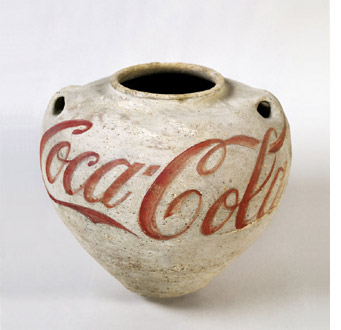Mahjong
Contemporary Chinese Art from the Sigg Collection
June 14 to October 16, 2005
Opening: Sunday, June 12, 2005, 11 am (between opening Venice Biennale and ART Basel)
Press conference and catalogue presentation by Kunstmuseum Bern, Kunsthalle Hamburg and Hatje Cantz Verlag: Thursday, June 9, 2005, 11.30 am (Palazzo Sulam, Venice, Italy)
Kunstmuseum Bern, Switzerland
(and Holderbank, Switzerland)
Other venues: Kunsthalle Hamburg, Germany (fall 2006)
www.kunstmuseumbern.ch
Curators: Bernhard Fibicher and Ai Wei Wei
Since China’s post-Mao reform program began in 1979, the country has witnessed the emergence of an extremely diverse and dynamic art scene, in spite of the continuing difficulties still involved in independent art production. This has attracted enormous interest in the west in recent years. Chinese artists have entered the international art world with ease, adeptly making use of various media, techniques and forms of expression developed in the west, from the traditional genres of oil painting and sculpture to installation, photography, performance, body art and video. At the same time, the specifically Chinese roots – pre-modern tradition on the one hand and the socialist realism prescribed by the CP until the late 1970s on the other hand – are tangible in many of their works. One typical trait, for instance, in comparison to western art, is the emphasis on figurative painting. Some artists consciously address their national identity by adopting the techniques and/or formal syntax of traditional Chinese art (ink drawings, calligraphy, porcelain etc.) and placing them in a new context. Another important theme involves parodying or reflecting on western art and its art historical canon from a Chinese point of view. Above all, however, Chinese avant-garde art is to be considered in the light of the enormous social and economic change the country has undergone in the past few decades; in particular, many works clearly reflect the tension between the socialist ideals that are still officially operative and the consumerism unleashed by capitalist reforms.
Swiss collector Uli Sigg has first-hand knowledge of Chinese culture through his close links with China since the late 1970s. In 1980, he helped to negotiate the first joint venture between China and a western company (Schindler). From1995-98 he was Swiss ambassador to Beijing. Together with his wife Rita, Uli Sigg has been collecting Chinese art since the mid-1990s and is something of a pioneer in this field. Having started out purchasing only current works, he soon began extending his collection to include “historic” avant-garde works of the 1980s and early 1990s. The result is a collection of contemporary Chinese art of a scope and quality unparalleled anywhere in the world.
The representative cross-section of works to be shown at Kunstmuseum Bern will be the first time that the Sigg Collection has been presented to the public on this scale. This survey of a quarter of a century of Chinese avant-garde art (1979-2004) will surpass all previous exhibitions in both scope and quality. The exhibition is structured into clearly legible themes, starting with a selection of Mao propaganda art intended to shed light on the roots of Chinese art of the late 1970s. To ensure that the exhibition is also accessible to the many visitors who are likely to be more or less unfamiliar with the artistic, social and political context of the works, background information appropriate to the complexity of the subject matter will be included. Ideally, this will enable visitors to gain an insight into the life and culture of modern China. An extensive catalogue published by Hatje Cantz will accompany the exhibition. It will include an interview with the collector, essays by the curators, explanations and analyses of individual works and general introductions to socio-political and artistic developments in China (by Li Xianting, Hou Hanru, Pi Li, Estelle Bories) over the past three decades.
Fringe events related to the exhibition, with lectures, performances, a film and video program, concerts etc., will also introduce the audience to other aspects of Chinese culture.

